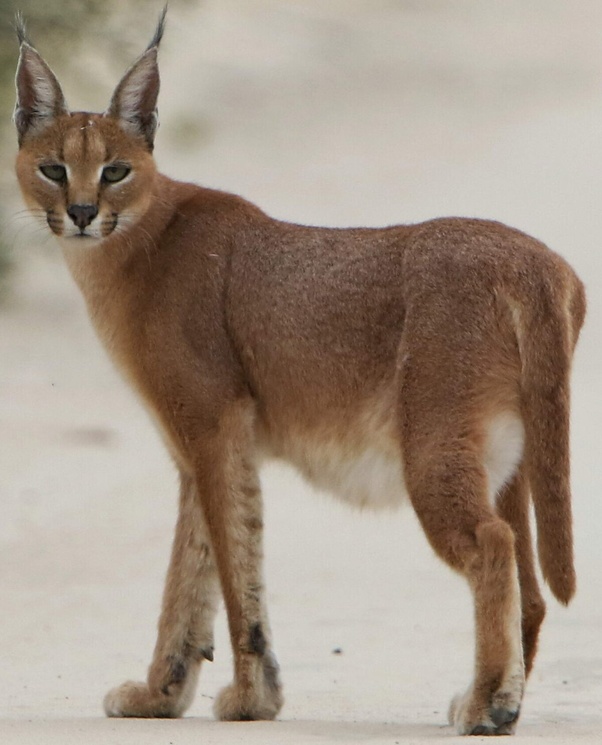
Why Do Caracals Hiss All the Time? Unveiling Secrets
Caracals hiss frequently as a communication method and as a response to threats. This behavior serves both social and defensive purposes.
Caracals, the medium-sized wild cats native to Africa, the Middle East, Central Asia, and India, are known for their distinctive ear tufts and agile hunting skills. Their hissing is part of a broader range of vocalizations used to express various emotions and intentions, from territorial warnings to expressions of fear or aggression.
Understanding why caracals hiss requires a glimpse into their behavior and environment. As solitary animals, they rely on vocal and non-vocal signals to interact with others of their kind and to assert dominance or discomfort. Observing caracals in the wild reveals that their hissing is just one aspect of their complex communication system, which is crucial for their survival in diverse habitats.
The Enigma Of Caracal Hissing
Caracals often hiss, a behavior that puzzles many. This hissing is a form of communication. Experts believe it’s to express discomfort or distress. Understanding this can help in caracal conservation efforts. These wild cats may hiss more frequently in captivity. It’s vital to note that hissing is not always a sign of aggression. Sometimes, it’s just a way to interact with their environment.

Credit: www.tiktok.com
Caracal Communication 101
Caracals communicate using various sounds. The hiss is just one part of their vocal repertoire. They also meow, growl, and purr, each with its unique message. These sounds are crucial for territorial claims and social interactions.
Body language plays a vital role in caracal communication. Their large, tufted ears are not just for show. Caracals move their ears to express emotions and intentions. Erect ears can signal alertness or curiosity. In contrast, flattened ears might indicate aggression or fear.
Unpacking The Hiss: Threat Or Talk?
Caracals often hiss, and it’s not just random noise. This sound communicates feelings like annoyance or fear. A hiss might mean a caracal feels threatened or wants to be left alone. These wild cats use hissing to talk to each other, too. It’s a way for them to say “back off” without fighting.
Socially savvy caracals also hiss to chat with their kind. This sound acts as a social signal among them. It can mean different things depending on the situation. For example, during play, a hiss might just be a part of the game. Understanding this helps us see hissing as more than just aggression.

Credit: www.youtube.com
The Science Behind The Sound
The caracal’s hiss is a distinct vocalization used for communication. Understanding this sound involves examining its physiology and acoustic properties. Caracals produce a hiss by forcing air through their respiratory system. This action involves the larynx and the diaphragm. Such sounds serve to warn intruders or express discomfort.
The hisses from caracals have unique sound patterns. Scientists use audio analysis to study these patterns. They look at frequency, duration, and intensity. These acoustic characteristics help researchers understand why caracals hiss so frequently. Each hiss can mean different things, from threats to playfulness.
Behavioral Context Of Caracal Hisses
Caracals communicate through various sounds, and hissing is a common behavior. Understanding why these medium-sized wild cats hiss requires observing them in their natural habitat. Territorial claims are a primary reason for their hisses. Caracals are solo hunters and do not share their hunting grounds lightly.
They often hiss to warn intruders and establish dominance over a particular area. This sound serves as a clear signal to other animals that they are trespassing. The hiss is a non-physical way to deter others without resorting to violence.
Fear and defense mechanisms are also tied to the hissing of a caracal. When threatened, they will hiss as a first line of defense. This behavior is meant to intimidate predators or humans and indicate their readiness to defend themselves if necessary.
Human Encounters And Misconceptions
Caracals often hiss, a behavior misunderstood by many. People tend to assume this sound indicates aggression or discomfort. Yet, it’s crucial to consider caracal communication complexity. These majestic felines use a variety of vocalizations for different reasons.
Common myths suggest that a hissing caracal is a sign of hostility. Research reveals that hissing can also be a form of self-expression or communication. Hissing might occur during play, while exploring new environments, or when encountering other animals. It’s important to interpret these behaviors within the proper context rather than jumping to conclusions.
| Myth | Fact |
|---|---|
| Hissing means the caracal feels threatened. | Hissing can be a normal part of their communication. |
| Caracals hiss only when they are angry. | Hissing may express curiosity or playfulness. |
Conservation Efforts And Caracal Stress
Caracals face increased stress from shrinking habitats. Their natural environments are declining due to human expansion. This loss leads to more frequent encounters with humans, prompting caracals to hiss as a defense mechanism. The sound serves as a warning to potential threats, signaling the caracal’s stress and discomfort. Conservation efforts aim to reduce human-animal conflicts and protect the caracal’s remaining natural habitats. By understanding the role of hissing, we can better support these elusive felines.
Their hiss is a critical survival tool. It’s used to communicate boundaries and dissuade predators. With each habitat encroachment, caracals rely more on this behavior. Conserving their spaces is crucial for reducing stress-induced hissing. This, in turn, supports their overall well-being and conservation status.
Credit: www.quora.com
Studying Caracals In The Wild
Caracals are mysterious felines whose hissing behavior intrigues scientists. Field studies have become crucial in understanding this trait. Researchers employ trail cameras and sound recording equipment to capture these elusive cats in action. These techniques yield valuable data, revealing nuances in caracal communication.
Observational research often involves hours of tracking. Scientists note the contexts in which caracals hiss, such as during territorial disputes or mate signaling. This information helps decipher the meanings behind the sounds. Insights from these studies contribute to our comprehensive knowledge of caracal behavior.
Frequently Asked Questions
Is It Normal For Caracals To Hiss?
Yes, it is normal for caracals to hiss, especially as a defensive behavior when threatened or scared.
Are Caracals Naturally Aggressive?
Caracals are not naturally aggressive towards humans but can be territorial with other animals. They typically avoid human contact and display aggression only when threatened or provoked.
Do Caracals Like Their Owners?
Caracals can form attachments to their owners, showing affection and loyalty similar to domestic cats. However, they are wild animals and may exhibit unpredictable behavior.
What Is The Problem With The Caracal?
Caracals face habitat loss, reduced prey availability, and illegal wildlife trade, threatening their survival.
Conclusion
Understanding caracal behavior, especially their hissing, is intriguing for wildlife enthusiasts and pet owners alike. This auditory display can signal various states, from fear to territoriality. By acknowledging the reasons behind their vocalizations, we foster a deeper connection with these majestic creatures.
Remember, each hiss tells a story; it’s our job to listen.



